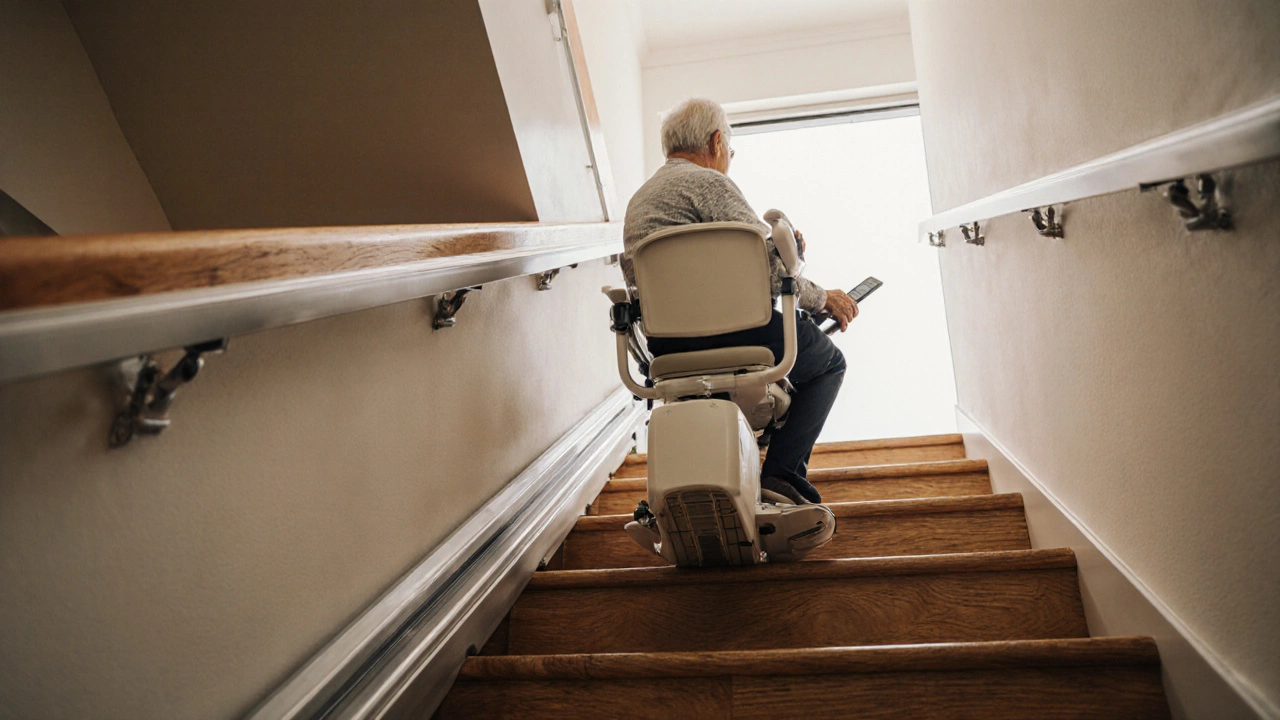Standard Stair Lift: What It Is and Why It Matters
When thinking about Standard Stair Lift, a motorized seat that glides on a rail fixed to a staircase, letting users travel between floors safely. Also known as chair lift, it provides independent mobility for people who find stairs a barrier. Home Accessibility requires solutions like stair lifts to keep homes usable for everyone, while Mobility Aid covers devices that help people move without assistance. A well‑planned Staircase Design must accommodate the lift’s rail, power source, and clearances. In short, a standard stair lift links the concepts of safety, independence, and thoughtful home layout.
Key Things to Know About Standard Stair Lifts
The first thing to grasp is that a standard stair lift includes a motor, a seat, and a rail. The rail follows the curve of the stairs, so the lift can handle straight runs, 90‑degree turns, or even curved staircases. Installation usually takes a single day, and most manufacturers offer a warranty that covers the motor and rail for several years. Because the lift runs on electricity, you’ll need a reliable power outlet nearby; many units also have battery backup to keep them running during short outages.
Choosing the right lift depends on a few core attributes. Weight capacity typically ranges from 250 lb to 400 lb, so you’ll want a model that exceeds the heaviest user’s weight. Seat comfort matters too—some lifts have padded cushions, armrests, and even swivel features for easier entry and exit. Safety sensors are another must; they stop the lift if an obstacle is detected on the track. When you match these attributes to the user’s needs, the lift becomes a true mobility aid rather than just a gadget.
Installation touches on staircase design. You’ll need enough headroom for the rail, and the stairs should be structurally sound to bear the additional load. A professional installer will measure the rise and run of each step, then customize the rail length and angle. In older homes, it’s common to reinforce the treads or add brackets to ensure stability. This preparation is part of the broader home accessibility plan, which may also include handrails, bathroom grab bars, and widened doorways.
Maintenance is straightforward but essential. Regularly check the rail for dust, inspect the battery for corrosion, and test the emergency stop button. Most manufacturers recommend a service check once a year. By staying on top of these tasks, you keep the lift reliable and extend its lifespan, protecting your investment and the user’s safety.
Below you’ll find a curated collection of articles that dive deeper into each of these topics—design ideas, cost breakdowns, style tips, and real‑world reviews. Whether you’re just curious about how a standard stair lift works or ready to start the installation process, the posts that follow will give you practical, step‑by‑step guidance.

Standard Stair Lift Cost: Prices, Installation & Financing Guide
Discover the true cost of a standard stair lift in NZ, including price ranges, installation fees, financing options and maintenance. Get a clear guide to budgeting and choosing the right lift.
Categories
- Storage (25)
- Bathroom (17)
- Sofas (14)
- Curtains (14)
- Home Decor (12)
- Bedding (10)
- Kitchenware (10)
- Cushions (10)
- Mirrors (10)
- Rugs (9)



